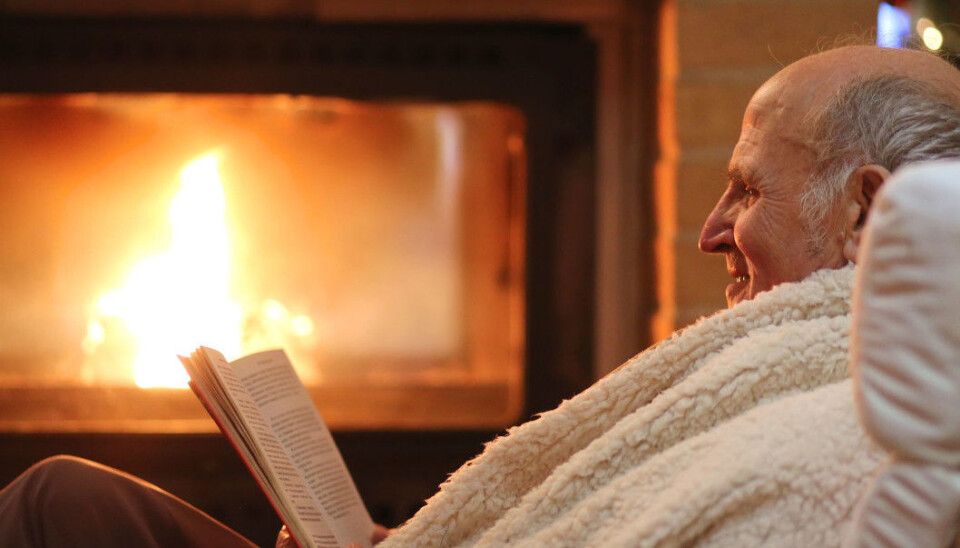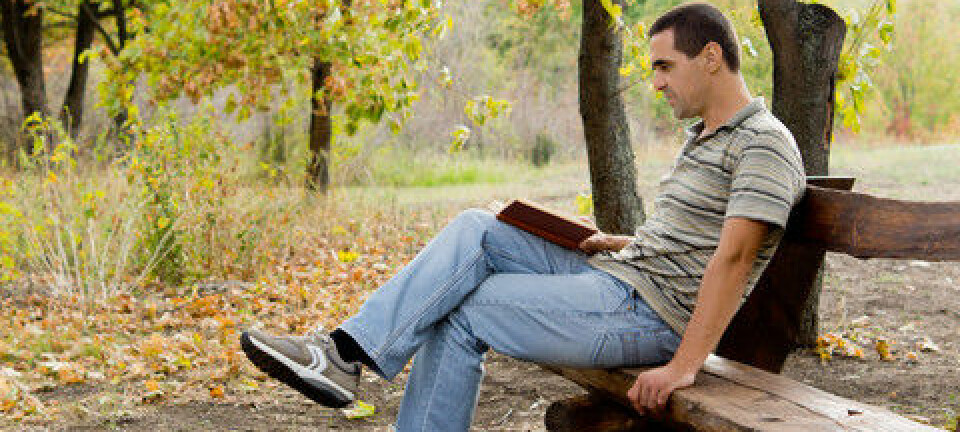
Not so hygge: Cosy lighting prevents elderly people reading in winter
A Norwegian study shows that the homes of 75 year olds are too dark for comfortable reading, despite their living rooms containing on average fifteen different lights.
The nights are drawing in and autumn is on its way.
In Scandinavia, it is the time for hygge: Candles, and gathering cosily around the woodstove. But for some, this time of year brings physical and social limitations.
A new study reveals that as the days draw shorter, many older people limit their activities such as puzzles and crafts, reading, and writing to the short daylight hours. And some put them away altogether until spring returns.
Average room had 15 lights
The study was conducted by researchers at the University of South-Eastern Norway (USN). With the help of healthy 75 year olds in the Drammen municipality of Norway, they measured light levels in the main rooms of 114 homes during the winter months.
The results showed that almost all the study participant’s homes were too dark. But the darkness wasn’t for a lack of lamps.
“On average, people in the study had fifteen lights in their living room,” says co-author, Associate Professor Helle K. Falkenberg, from USN.
“They had wall lights, standing lamps and lights over pictures. But the switches were often tucked behind the couch or under shelves and were inconvenient to reach, so many of the lamps didn’t get turned on,” she says.
Most of the light bulbs also tended to give off a warm and cosy light.
"In the Nordic countries, we often prefer warm lighting that creates a good ambience to a whiter light, which is used more in southern Europe. It's nice during the winter months, but not particularly vision-friendly for older people,” she says.
Read More: The Danish concept of 'hygge'--and why it's their latest successful export
Elderly people still satisfied
Falkenberg and colleagues asked the 75-year-old study participants to report on their own health. Participants were also asked how they experienced their lighting conditions at home and how light limited their daily activities. Only healthy older individuals with normal vision participated in the study.
The participants generally felt their health was good, and they did not report any problems with the lighting or their vision. However, when the researchers interviewed them more closely about their daily activities, it turned out that many participants stopped doing things that required a lot of daylight, or they waited for a brighter time of day.
Falkenberg also found clear social differences. Participants with the lowest incomes had the darkest homes. They also experienced the greatest limitations in their everyday lives due to poor lighting conditions. This was particularly the case for single women.
Read More: Why Norwegians look forward to long winter nights
Changed lighting conditions in 30 homes
In the next phase of the study, which is not yet published, the researchers returned to 30 of the same homes, where they improved the lighting conditions.
The researchers used a similar number of homes, making no changes, as a control group.
"In the homes where we made changes, lighting designers measured the light and adjusted it to the recommended level. Then they linked all the lights to a single control system with one on and off switch and two brightness levels. Similar systems are readily available in many places,” says Falkenberg.
Read More: Candle particles might be just as harmful as diesel fumes
Logged lighting use
All the elderly who participated in the intervention and in the control group received a logbook in which they tracked their light use every day for four months.
These changes allowed the study participants to read and write more and became more active.
"All but one of the participants who had received a new lighting system wanted to keep it after the research project ended," says Falkenberg.
"Has it really been that dark here?" is what most people asked after they became aware of how much darker it was before the researchers visited.
Read More: Why you should read and train to boost your brain
Unaware of weakening vision
Falkenberg says that our vision gradually weakens with age. Many people are not aware of how poorly they are really seeing things.
An 80-year-old actually needs four times as much light as a 20-year-old and two and a half times as much contrast. But already by our early 40s, the human lens is changing, and becomes stiffer.
The lens “becomes like a camera that can’t autofocus. A lot of people compensate for this with ‘longer arms’ or by buying reading glasses. Good lighting also helps,” says Falkenberg.
Read More: Poor reading skills in Nordic countries link to poor health
Affects quality of life
In our 60s, things get worse. Our retina doesn’t respond as quickly and the glare of bright light blinds us more easily. Our eyes also take a lot longer to adjust from light to dark and vice versa. This makes it harder to drive a car in tunnels, for example.
In our 70s, we gradually lose the ability to see contrasts. And the older we get, the greater the risk becomes for eye diseases that can lead to permanent vision loss, says Falkenberg.
She is calling for more research on how indoor lighting affects the well being of healthy people.
"We know that poor lighting and vision increase the risk of falling, depression, and loneliness. When older people’s hearing also becomes impaired, they often sit at home a lot. They become less physically and socially active than they were before. Implementing some simple measures can provide much better daily living conditions," Falkenberg says.
----------------
Read more in the Norwegian version of this article at forskning.no



































